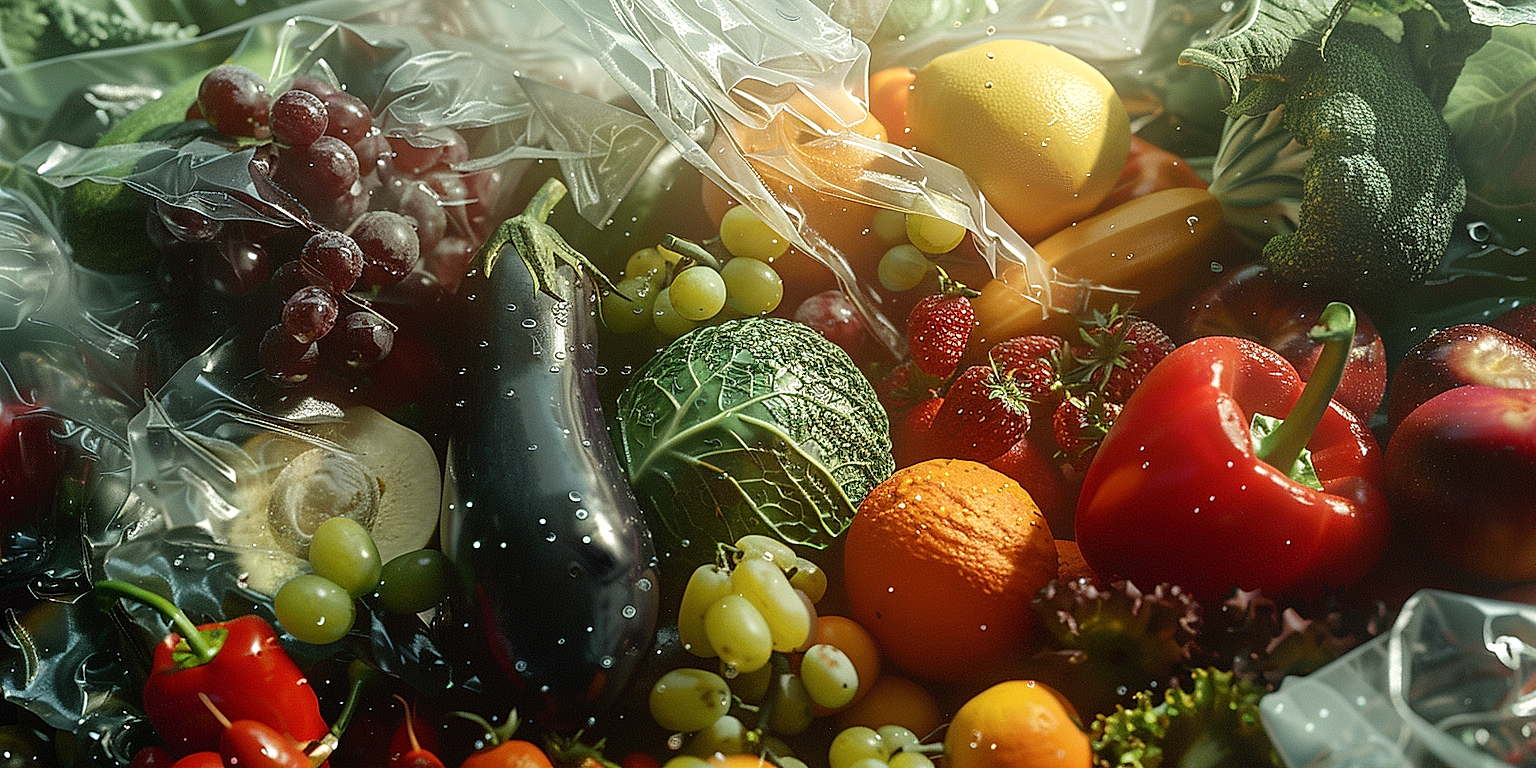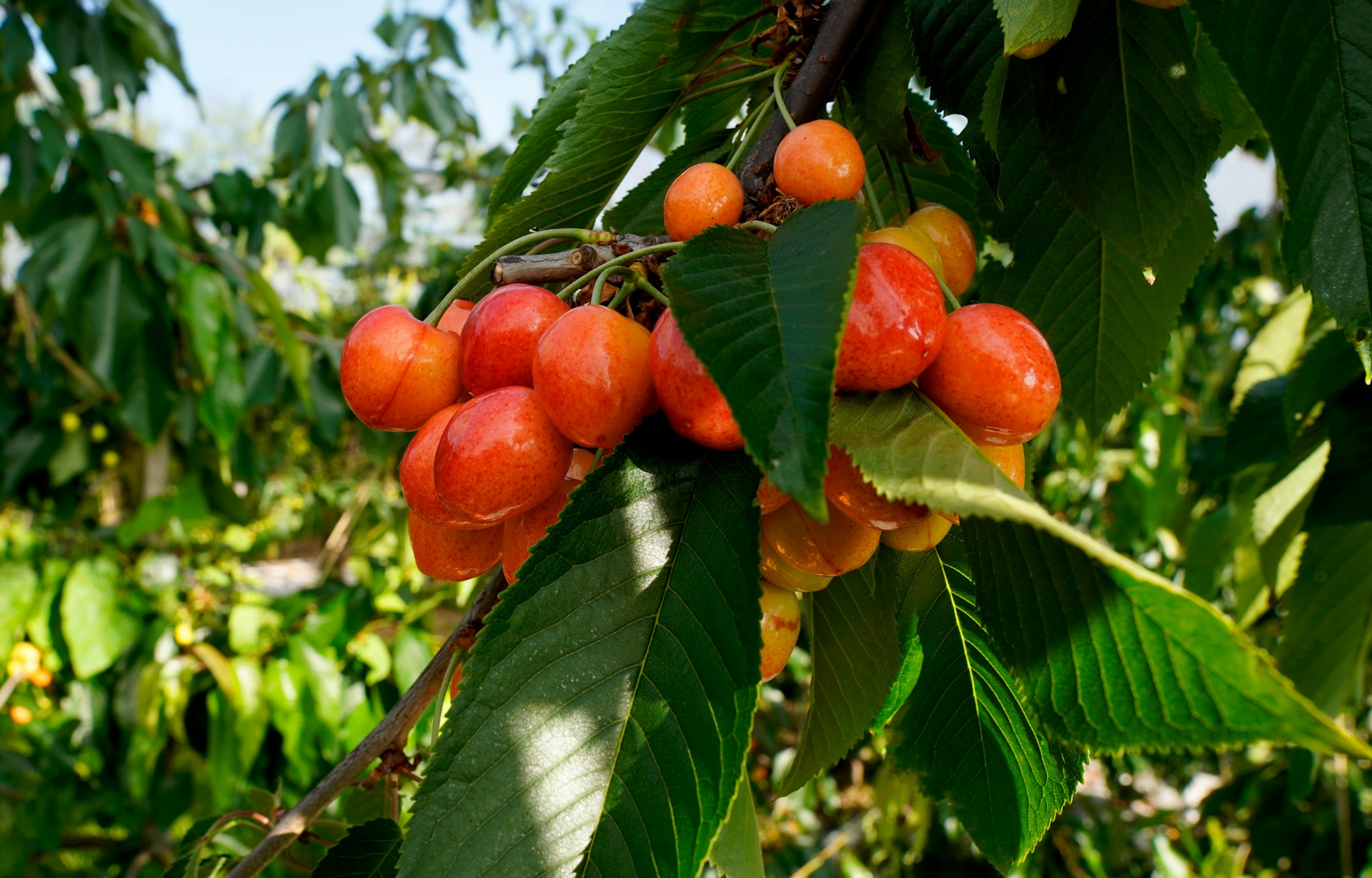The distribution of fresh produce is a complex affair, dictated by the inherent perishability of fruits and vegetables.
Traditionally, this supply chain has been heavily reliant on refrigeration, utilizing energy-consuming systems that contribute significantly to greenhouse gas emissions.
In a world increasingly concerned with climate change, it’s necessary to pave the way towards more sustainable and environmentally friendly strategies.
This need has motivated many industry professionals to turn their attention towards innovations in the cold chain.
Today, our focus lies on exploring various ground-breaking approaches that aim to reframe our understanding of the refrigerated supply chain.
Through this lens, we can garner a better appreciation for the potential of such advancements to strike a balance between economic viability, food safety, and ecological responsibility.
Contents
- Cold Chain Innovations For Greener Produce Distribution
- 1. Solar-Powered Cold Storage Units
- 2. IoT-Enabled Temperature Monitoring
- 3. Eco-friendly refrigerants for cold storage
- 4. AI-assisted Cold Chain Optimization
- 5. Biodiesel-powered refrigerated trucks
- 6. Reusable Insulated Packaging Solutions
- 7. Bio-based Phase Change Materials for Cooling
- 8. Blockchain for Improving Cold Chain Transparency
- 9. Energy-efficient refrigeration systems
- 10. Hydrogen fuel cell-powered refrigeration units
- The Bottom Line
Cold Chain Innovations For Greener Produce Distribution
1. Solar-Powered Cold Storage Units
One of the critical innovations driving greener produce distribution is the use of solar-powered cold storage units.
These configurations harness the energy derived from the sun, then utilize it for cooling the storage units.
Solar power as a renewable energy source is a perfect solution to reduce the carbon footprint associated with conventional cold chain operations.
As the world gravitates towards sustainability, solar-powered cold storage units present an eco-friendly alternative that is not only effective but also affordable.
These units convert sunlight directly into electricity by absorbing sunlight through photovoltaic cells.
With the advancement of technology, it’s become possible to generate enough electricity to power these large, heavy-duty appliances.
This, in turn, bolsters the efficiency of the cold chain whilst significantly minimizing energy consumption and greenhouse gas emissions.
Furthermore, these units can be especially handy for use in remote regions where the electrical power supply is erratic or non-existent.
They ensure a continuous supply of power, thus preventing spoilage of fresh produce due to inconsistent temperatures.
Solar-powered cold storage units also go a long way in improving food security in such regions by prolonging the shelf life of agricultural products.
They ensure a continuous supply of power, thus preventing spoilage of fresh produce due to inconsistent temperatures.
In addition, the power generated from solar energy can be stored and used during periods of low sunlight such as during the night or in cloudy weather.
This power stored in batteries ensures the continuous running of the cold storage units, resulting in zero interruptions in the cold chain.
Another compelling point for solar-powered cold storage units is the low maintenance cost.
Once the system is set up, there’s little need for regular checks compared to traditional diesel-powered generators.
This translates to reduced operational costs, making it an economically viable option for businesses operating on a tight budget.
Their adaptability for use in different weather conditions and ease of installation make them an attractive investment for agribusinesses and distributors aiming to improve their supply chain efficiency while staying environmentally conscious.
The proliferation of solar-powered cold storage units promises a future where the movement of perishable goods is safe, efficient, and ecologically sensitive.
2. IoT-Enabled Temperature Monitoring
Emerging in the modern sphere of technology is the concept of Internet of Things (IoT).
It’s a revolutionary approach that integrates interconnectivity among devices for seamless and automated functioning.
In the context of cold chains, IoT has surged as a potent tool, particularly in the temperature monitoring of perishable goods.
Implementing IoT-enabled temperature monitoring is a venture into smarter and environmentally-friendly supply chains.
IoT devices outfitted with temperature sensors can relay real-time information on the condition and temperature of goods in transit.
This way, stakeholders can receive instant updates, preventing costly losses due to spoilage.
IoT-enabled temperature monitoring is a powerful tool to maintain optimum storage conditions and enhance efficiency, contributing to the goal of sustainable produce distribution.
Energy consumption is another area that benefits from IoT devices.
By accurately keeping track of temperature conditions, the devices can streamline energy use, leading to substantial cuts in greenhouse emissions caused by overcooling.
The process leverages wireless connectivity and cloud platforms, significantly reducing the need for manual intervention and paper-based records.
Such changes inadvertently make workflows leaner, more efficient, and environmentally friendly.
Aside from this, IoT-enabled temperature monitoring also fortifies traceability and transparency in cold chains.
Information available in real-time helps paint a clearer traceability picture for food safety regulators, retailers, and consumers alike.
As a result of such initiatives, businesses can achieve an optimal balance between efficiency and sustainability.
Incorporating IoT into cold chains will bring about a paradigm shift for greener produce distribution, where technology is closely intertwined with sustainability efforts.
With the advent of IoT, the future of cold chains appears technologically sophisticated, eco-friendlier, and indisputably better aligned to the principles of sustainability.
3. Eco-friendly refrigerants for cold storage
The use of eco-friendly refrigerants in cold storage units is becoming a vital approach towards achieving a more sustainable produce distribution model.
Traditional refrigerants, such as HFCs and HCFCs, are known to contribute significantly to global warming and ozone layer depletion.
These harmful effects have led to the advent of greener alternatives like hydrofluoroolefins (HFOs) and natural refrigerants like carbon dioxide, ammonia, and hydrocarbons.
Natural refrigerants are particularly gaining momentum due to their zero ozone-depleting potential and very low global warming potential.
For instance, ammonia, being a naturally occurring gas, has a global warming potential of zero, making it an excellent choice for large industrial refrigeration systems.
Carbon dioxide, while typically associated with global warming, can serve as a natural refrigerant due to its nontoxic and nonflammable properties, in addition to having a global warming potential lower than that of many artificial refrigerants.
Hydrocarbons like propane and isobutane have also been introduced as feasible alternatives due to their optimal thermodynamic properties and low environmental impact.
Additionally, hydrofluoroolefins (HFOs) are emerging as promising candidates in the field of eco-friendly refrigerants.
While they are man-made, HFOs have the potential to provide the cooling performance of traditional refrigerants without posing the same threats to the environment.
The implementation of eco-friendly refrigerants requires changes to equipment design and operational procedures to accommodate different thermodynamic properties and safety considerations.
However, the long term environmental benefits and growing regulatory pressures to mitigate climate change strongly justify these investments.
Many companies are now switching to eco-friendly refrigerants as part of their efforts to reach sustainability goals and reduce their carbon footprint.
Looking forward, the use of eco-friendly refrigerants will likely become a standard in the cold storage industry, contributing to the wider goal of creating a greener cold chain for produce distribution.
However, despite the promising prospects, there are still challenges ahead, such as the need for further research and development and more coordinated global action to phase out harmful refrigerants.
Yet, the rapid growth of innovation in this area reinforces the potential of eco-friendly refrigerants to bring about a more sustainable future in cold chain management.
4. AI-assisted Cold Chain Optimization
Artificial Intelligence (AI) has the potential to transform the cold chain industry by providing advanced data analytics capabilities and predictive insights.
The use of AI in cold chain logistics brings about efficient real-time tracking and end-to-end visibility of the supply chain processes.
This results in more effective loss prevention and improved product quality.
AI can play a key role in optimizing logistics routes, predicting equipment failures, and making cold chain operations more energy-efficient.
By forecasting potential equipment issues, businesses can avoid costly downtime and ensure continued optimal operation of their cold storage units.
Additionally, the use of AI in cold chain management can reduce the environmental impact of the cold chain by optimizing energy use and reducing waste.
Through intelligent algorithms, AI can intelligently analyze various data points in the cold chain to predict and prevent potential issues, or identify areas for improved efficiency.
These AI algorithms can adapt and learn from the data they analyze, improving the accuracy of their predictive capabilities over time.
This not only helps in ensuring the quality and safety of the delivered food products but also in saving energy and reducing emissions.
More efficient routing and scheduling of transport can also result in reduced fuel consumption and emissions, furthering the goal of greener and more sustainable logistics operations.
Another aspect where AI-assistance stands out is in the area of inventory management.
AI can assist in maintaining optimal stock levels by predicting demand patterns and making recommendations for replenishment.
This avoids wastage from expired items, overstocking, understocking, and order delays, ensuring that businesses can operate as green as possible.
Overall, AI’s capability to turn almost real-time data into actionable insights is the game-changer for achieving a greener and more efficient cold supply chain.
With the help of AI, the cold chain industry can optimize its operations in a way that is both beneficial to the business and the environment.
5. Biodiesel-powered refrigerated trucks
One of the pioneering innovations in the realm of greener produce distribution is the use of biodiesel-powered refrigerated trucks.
These alternative-powered vehicles present an efficient solution to reduce environmental harm caused by conventional fuel-powered transportation.
The advent of this technology in the green cold chain sector signals a crucial shift from reliance on fossil fuels to the utilization of more renewable resources.
These trucks are not only efficient but also considerably lessen the carbon footprint of produce distribution.
The fuel used in these trucks, biodiesel, is a renewable, biodegradable and non-toxic fuel derived from a diverse mix of feedstocks including recycled cooking oil, soybean oil, and animal fats.
The production process for biodiesel entails lower greenhouse gas emissions compared to conventional diesel, which makes it a sustainable solution for cold chain logistics.
Moreover, biodiesel fuels reduce emission of pollutants such as carbon monoxide, sulfur dioxide, and particulate matter, thereby contributing to better air quality.
This technology also boasts of improved engine life for these trucks which reduces maintenance costs and increases efficiency in the long run.
The rising commercial availability of biodiesel fuel has made this innovation not only a viable but also a practicable solution to the challenges faced in cold chain logistics.
Furthermore, the switch to biodiesel-powered refrigerated trucks can be incentivized through various government subsidies and tax credits, presenting an economically beneficial option for businesses.
This shift requires systemic changes in the infrastructure and operations of cold chain logistics.
However, the adoption of this green technology signifies a larger commitment to sustainable practices in the produce distribution sector.
As public awareness and concern for environmental issues continue to increase, the implementation of biodiesel-powered refrigerated trucks in the cold chain represents a significant breakthrough in aligning business practices with broader societal values.
Innovation in the cold chain sector does not stop at this point, further research and development in the field of greener fuel alternatives is expected to drive the sustainability agenda forward.
Ultimately, the integration of biodiesel-powered refrigerated trucks represents a crucial step forward in the transformation of the cold chain logistics towards a more sustainable future.
6. Reusable Insulated Packaging Solutions
One of the recent advances in cold chain management is the development of reusable insulated packaging solutions.
These packaging solutions prove to be an important tool in maintaining necessary temperature conditions for perishable goods during transportation.
They not only promote sustainability by reducing waste but also enhance the efficiency of cold chain systems by maintaining optimal temperature conditions.
The composition of these innovative packages includes eco-friendly materials that are not harmful to the environment and can be easily reused.
Significantly cutting down the use of disposable packaging and reducing the overall carbon footprint of cold chain operations.
Insulation technology has advanced over the years, allowing for the design of packages that have excellent thermal resistance.
These packaging solutions provide superior insulation and excel in prolonging the shelf-life of fruits, vegetables, and other perishable products while in transit.
The reusable nature of these packages makes them cost-effective because they can be cleaned and reused multiple times before disposal.
Some of these packages come with integrated temperature monitors giving real-time data that plays a key role in cold chain management.
Improving efficiency, reducing waste, and ensuring that products reach consumers in the best possible condition are some of the core benefits of these packaging solutions.
These packages have been designed to be robust and can withstand the rigors of transport, leading to less product damage and loss.
From an ecological standpoint, using reusable insulated packages is advantageous as it significantly reduces the amount of packaging thrown away into the environment.
Moreover, these packages provide a practical solution for businesses to meet environmental regulations and societal demands for more sustainable practices.
Hence, coupling these packaging solutions with renewable powered cold storage or transport methods makes the entire cold chain process greener.
Adopting innovative solutions such as reusable insulated packaging shows a commitment to environmental sustainability and responsible business practices, which can potentially enhance brand image and customer loyalty as well.
7. Bio-based Phase Change Materials for Cooling
One of the exciting innovations in the domain of green produce distribution is the use of bio-based phase change materials (PCMs) for cooling.
These materials, which are often derived from bio-based resources, have the unique property of changing their physical state, such as from a solid to a liquid, within specific temperature ranges.
The most significant advantage of this property is the ability to absorb and release thermal energy during the phase change process, making these materials ideal for cooling and refrigeration purposes.
Instead of relying on energy-intensive cooling systems, bio-based PCMs can maintain an optimum cold environment for longer durations, significantly reducing the energy requirements and the strain on cold chain infrastructure.
Another salient feature of bio-based PCMs is their reusability.
Unlike traditional cooling agents, these can be regenerated or recharged via heat treatment processes, which makes them a more sustainable and cost-effective option for cold storage.
Additionally, due to their bio-based origins, these PCMs are non-toxic and environmentally friendly, contributing to the overall ecological sustainability of cold chain operations.
Commercial introduction of bio-based PCMs in cold chain logistics is still in its early stages, calling for further technological innovations and modifications for their wide-scale adoption.
Yet, some companies and research institutions are already developing advanced bio-based PCM solutions that are efficient, affordable, and particularly designed for green produce distribution.
For instance, there are bio-based PCMs that are encapsulated in microcapsules, enhancing their thermal regulation properties and enabling their integration into different packaging materials.
From an economic perspective, integration of bio-based PCMs in the cold chain infrastructure can decrease operating costs in the long run, due to their recharging capacities.
In conclusion, the innovative utilization of bio-based phase change materials in cooling and refrigeration can redefine the functioning of the cold chain industry, making it more sustainable, energy-efficient, and economically viable.
In light of the growing environmental concerns and pressing needs for sustainable solutions in every industry, bio-based PCMs stand out as a remarkable innovation in green cold chain logistics.
Bearing in mind the potential barriers in their wide-scale adoption, continued research and development efforts are crucial for optimizing and scaling up their commercial applications in the future.
8. Blockchain for Improving Cold Chain Transparency
Innovations in blockchain technology are allowing a new level of transparency and efficiency in the cold chain industry.
Blockchain, a distributed ledger system, is capable of recording transactions and tracking assets in a business network.
It operates as a decentralized database which can transparently record every step in a supply chain network.
A more transparent cold chain means higher operational efficiency, less waste, and ultimately, lower CO2 emissions.
This technology can efficiently track and verify every stage of the cold chain from farming, harvesting, processing, packaging, to the final delivery.
Data recorded on the blockchain is permanent, verifiable and cannot be changed or deleted, enhancing trust and confidence in the entire supply chain.
Blockchain allows providers to definitively demonstrate their green credentials by creating an immutable record of sustainability practices such as energy use and wastage rates.
With blockchain’s help, businesses are able to achieve granular visibility and real-time insights into their cold chain processes.
Through precise data, businesses can identify inefficiencies and implement changes that help in reducing the carbon footprint.
Utilizing this technology also helps in reducing paperwork, hence reducing energy consumption and further contributing towards greener distribution.
Additionally, blockchain technology can enhance food safety by quickly identifying and isolating any potential contaminants in the cold chain.
With blockchain’s product traceability, the origin of food items can be accurately known, facilitating measures to prevent food spoilage and wastage.
Businesses can better manage inventory thus reducing overproduction, understocking or overstocking situations, thereby decreasing unnecessary energy expenditure.
With increased transparency and efficiency comes the opportunity to improve vendor relationships, because of mutual benefits from reduced waste and increased profitability.
Blockchain technology has immense potential to revolutionize the cold chain, driving the adoption of greener produce distribution practices.
9. Energy-efficient refrigeration systems
As big driver of energy consumption and emissions, traditional refrigeration systems pose a significant challenge to the goal of introducing greener produce distribution in cold chains.
However, recent advancements in technology have facilitated the emergence of energy-efficient refrigeration systems that operate predominantly on renewable energy sources.
These systems have proven instrumental in reducing not just energy reliance but also the associated greenhouse gas emissions.
Energy-efficient refrigeration systems leverage several innovative technologies such as advanced insulation materials, high-efficiency compressors, and cooling strategies based on natural substances like water or air.
The implementation of high-efficiency compressors in these systems aid in reducing energy consumption by nearly 60% compared to conventional units.
The integration of advanced insulation materials in energy-efficient refrigeration systems not only minimizes heat transfer but also improves overall energy efficiency and reduces costs.
In addition to these, many energy-efficient refrigeration systems come equipped with sophisticated temperature control and data monitoring capabilities.
These capabilities allow for granular control over temperature settings, leading to finer maintenance of optimal conditions and thus, reduced power consumption.
An added benefit of these ‘smart’ energy-efficient refrigeration systems is the capability of diagnosing system faults early, preventing unnecessary energy wastage.
Some of these systems are even ‘smart-grid ready,’ meaning they have the ability to respond to grid conditions, such as overloads, by automatically lowering their energy consumption.
This feature alone can contribute to significant reductions in peak load demand and in turn, greenhouse gas emissions.
Importantly, energy efficient refrigeration systems have not only found applications in cold chain storage facilities, but are also increasingly being integrated into refrigerated trucks for transport.
This signifies a monumental shift towards greener solutions for produce transportation and distribution, thereby reinforcing energy efficiency as a cornerstone of cold chain logistics.
Moreover, compared to traditional systems, these energy-efficient refrigeration units promote better preservation of produce quality since they maintain more precise and stable conditions.
Furthermore, the integration of IoT technology with these systems has enabled real-time monitoring of storage conditions, ensuring the stability and integrity of the cold chain.
While the upfront cost of setting up an energy-efficient refrigeration system can be substantial, the return on investment, in the long run, is significantly higher due to the combined savings of energy costs and reduced produce loss.
10. Hydrogen fuel cell-powered refrigeration units
As the quest for sustainable solutions in cold chain distribution continues, one exciting development that has emerged is the use of hydrogen fuel cell-powered refrigeration units.
Fuel cell technology, especially hydrogen fuel cells, is hailed for its environmental benefits as it produces electricity with only heat and water as byproducts.
Notably, this technology can be particularly useful in cold chain logistics where the need for constant, reliable power supply is non-negotiable.
Keeping produce fresh during distribution requires a dependable refrigeration system.
In that regard, the use of hydrogen fuel cells in refrigeration units presents a potential game changer.
The incorporation of this inventive technology can address both power and environmental concerns enveloped in the cold chain distribution sector.
Most notably, these hydrogen fuel cell-powered units possess a high degree of energy efficiency.
This is because Hydrogen fuel cells convert chemical energy into electricity directly, minimizing the losses that usually occur in traditional power generation techniques.
Further, these units reduce the emission of greenhouse gases significantly because hydrogen, unlike conventional fuels, produces water when oxidized, reducing carbon emissions.
By using hydrogen fuel cells, companies can also demonstrate their commitment to green practices and sustainability.
This type of refrigeration unit could help lessen the carbon footprint of the cold chain and align with the global push towards more sustainable practices.
Additionally, hydrogen fuel cell technology can provide a reliable power supply for prolonged durations compared to other green power sources.
Hydrogen fuel cells do not rely on weather conditions making them independent of external factors that can be unpredictable.
Similarly, they are less prone to fluctuations and can provide consistent power, rendering them highly beneficial for cold chain logistics.
Finally, the maintenance requirements for these units are relatively low.
This low maintenance combined with high durability and operating efficiency makes the units an exciting proposition for cold chain logistics.
The Bottom Line
The advent of transformative and eco-friendly innovations in the cold chain sector usher in a new era that promises to profoundly impact not just industry operations, but the wider global sustainability movement.
Solar-powered cold storage units, IoT-enabled temperature monitoring, and the use of eco-friendly refrigerants imply significant advancements in efficiency and reduction in environmental impact.
Technologies such as AI-assisted optimization and blockchain also offer incredible potential in enhancing transparency and effectiveness in cold supply chains.
Meanwhile, innovative packing solutions, energy-efficient systems, and alternatives to traditional power sources, like biodiesel and hydrogen fuel cells, seek to tackle the sector’s carbon footprint.
Together, these game-changing developments underscore the bright and sustainable future of the cold chain industry.




